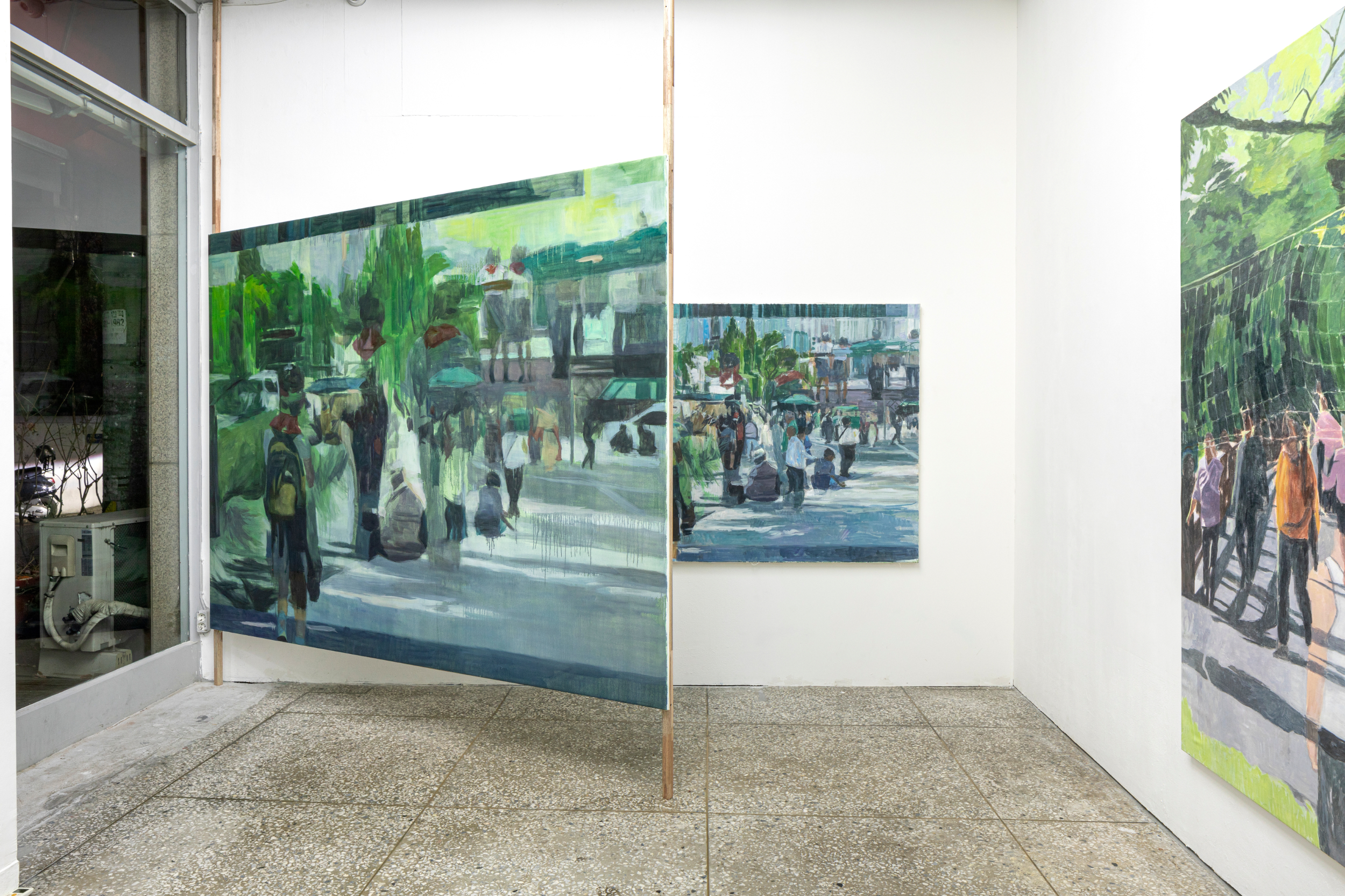
Students 2 Oil on canvas, 120x160cm, 2018
(De-)vision Division 4. Oil on canvas, 180x240cm, 2021
Photography: Tabial

Students 2 Oil on canvas, 120x160cm, 2018
Photography: Tabial
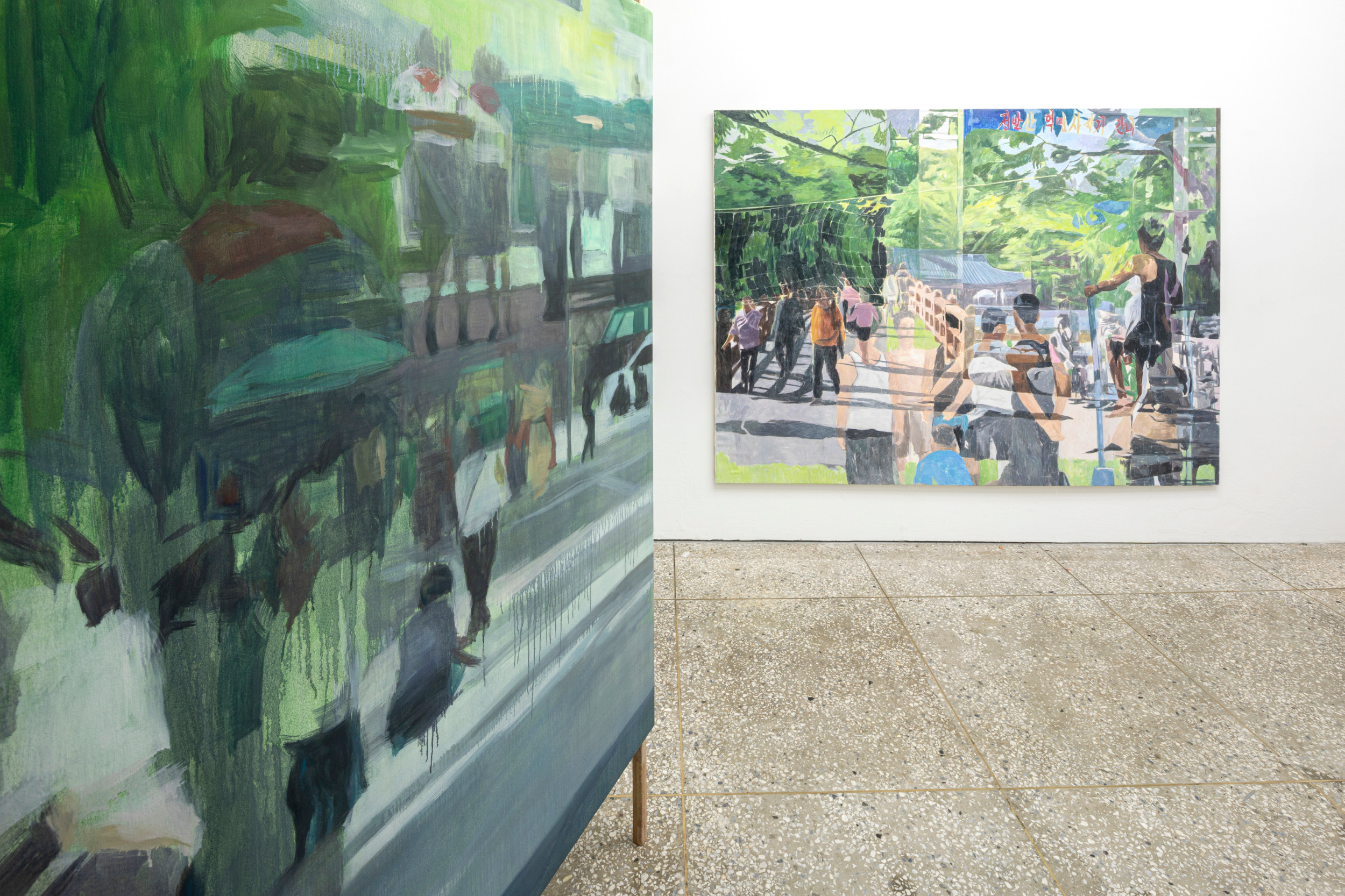
(De-)vision Division 4. Oil on canvas, 180x240cm, 2021
Photography: Tabial
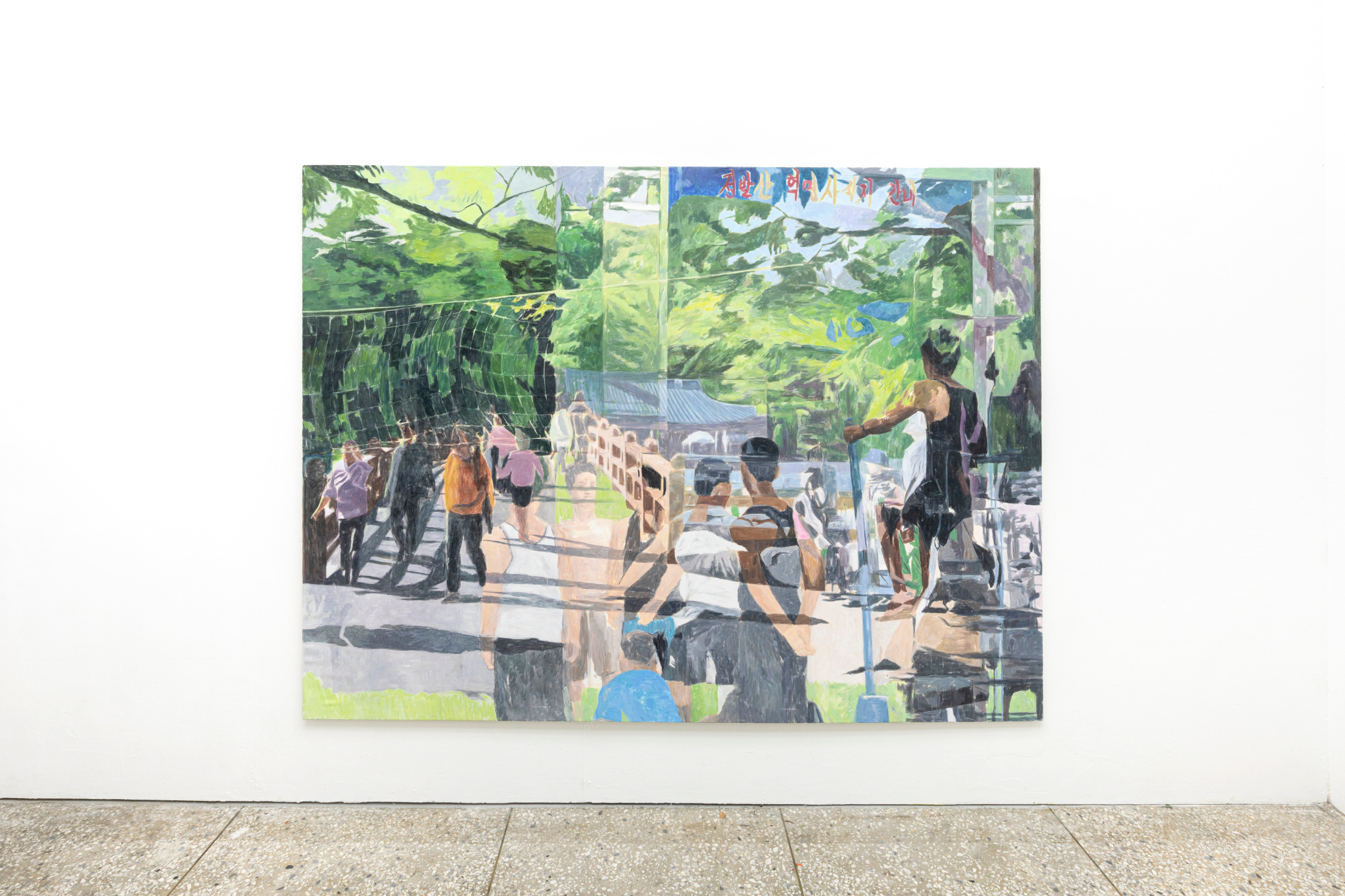
Photography: Tabial
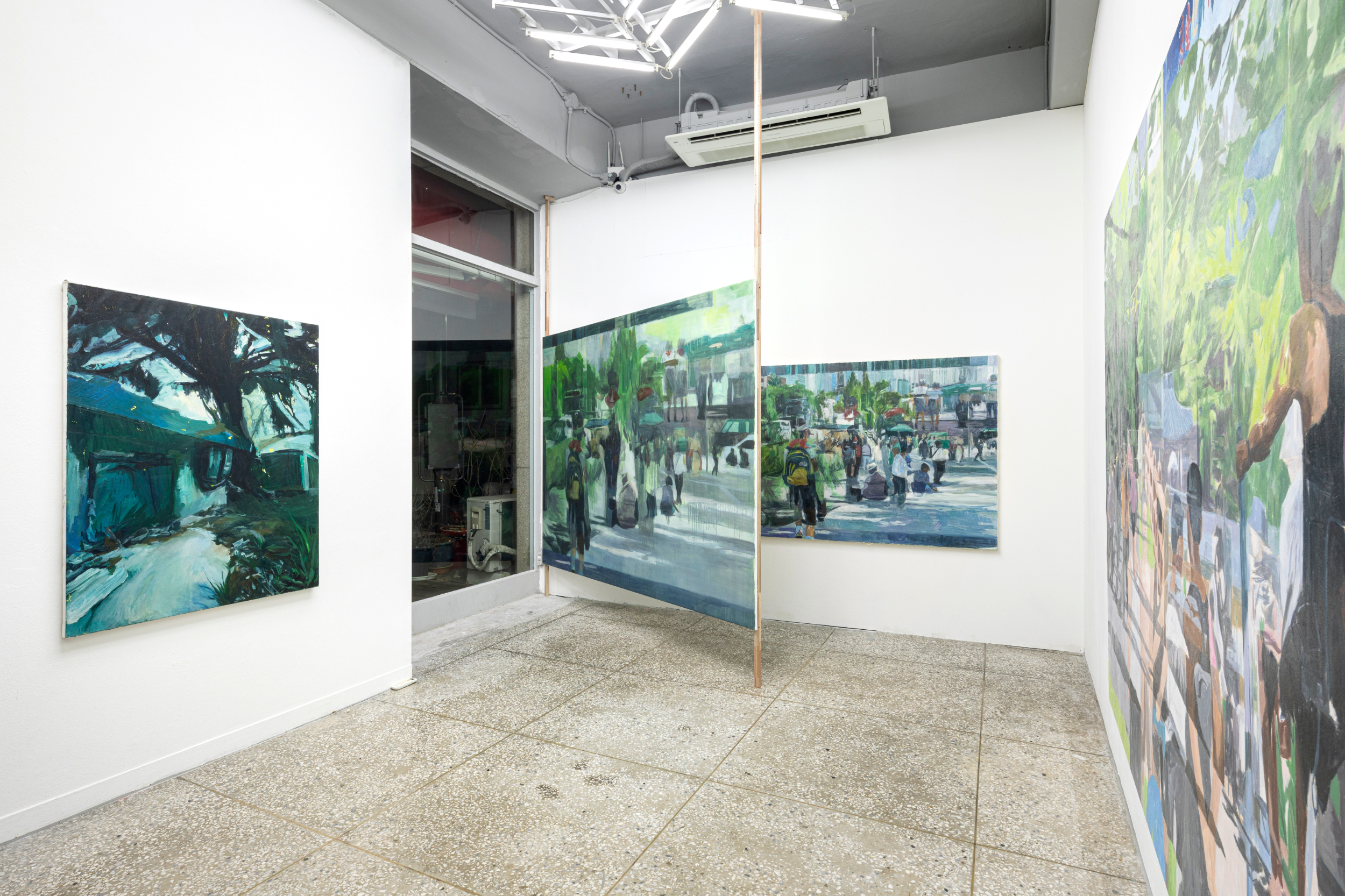
Students 1 Oil on canvas, 180x240cm, 2018
Students 2 Oil on canvas, 120x160cm, 2018
(De-)vision Division 4. Oil on canvas, 180x240cm, 2021
Photography: Tabial
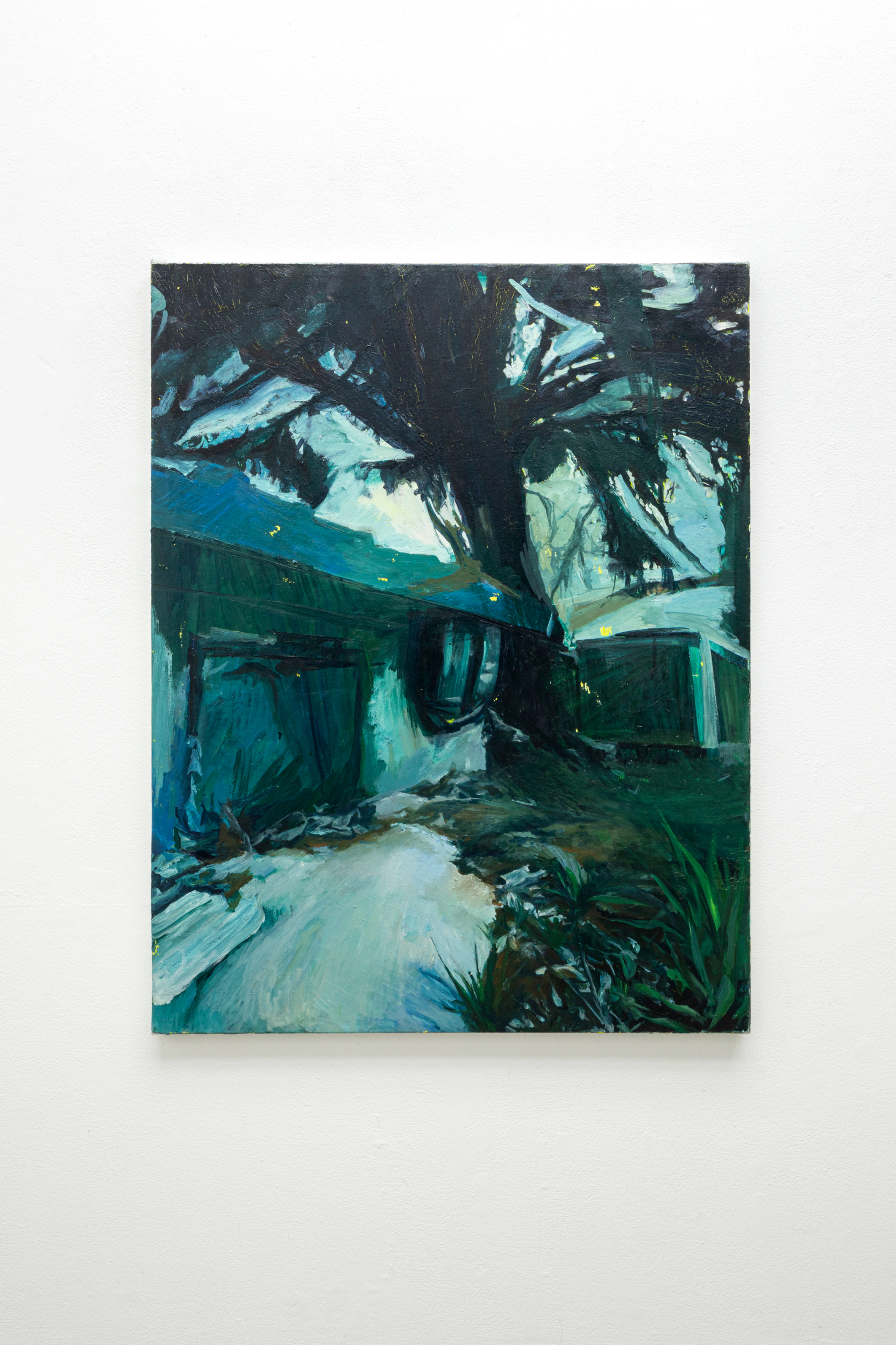
Photography: Tabial
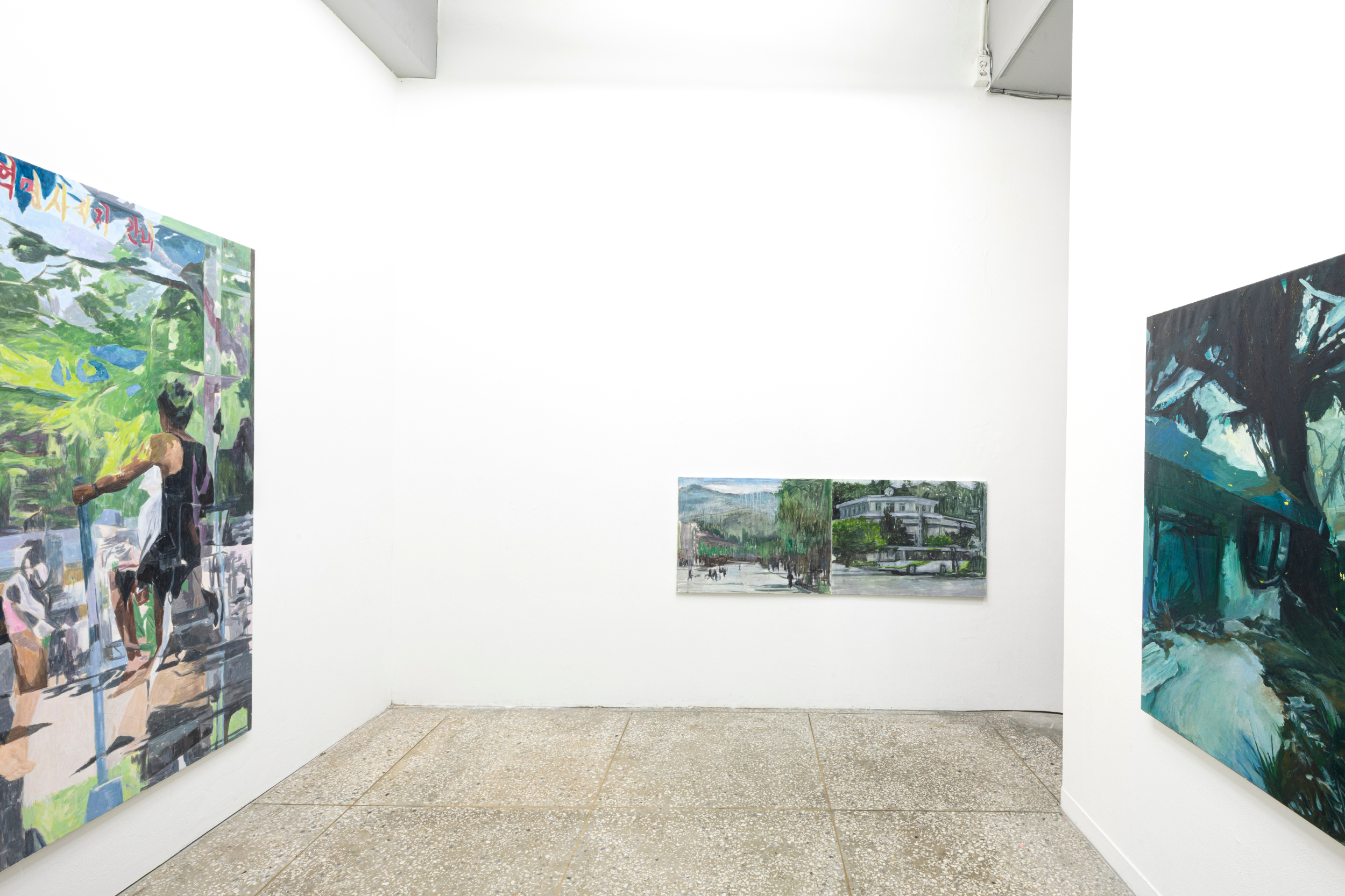
Photography: Tabial
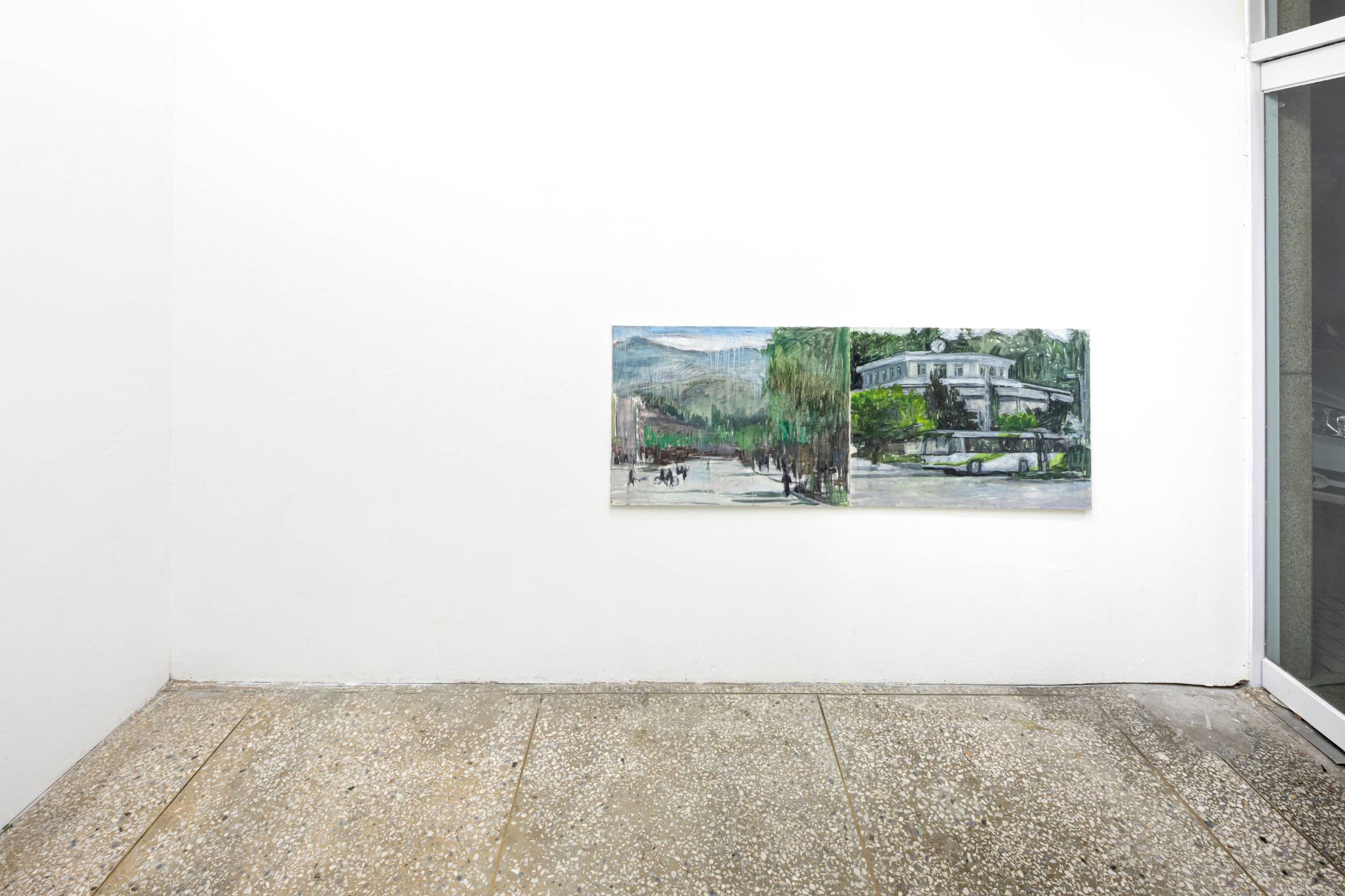
Photography: Tabial
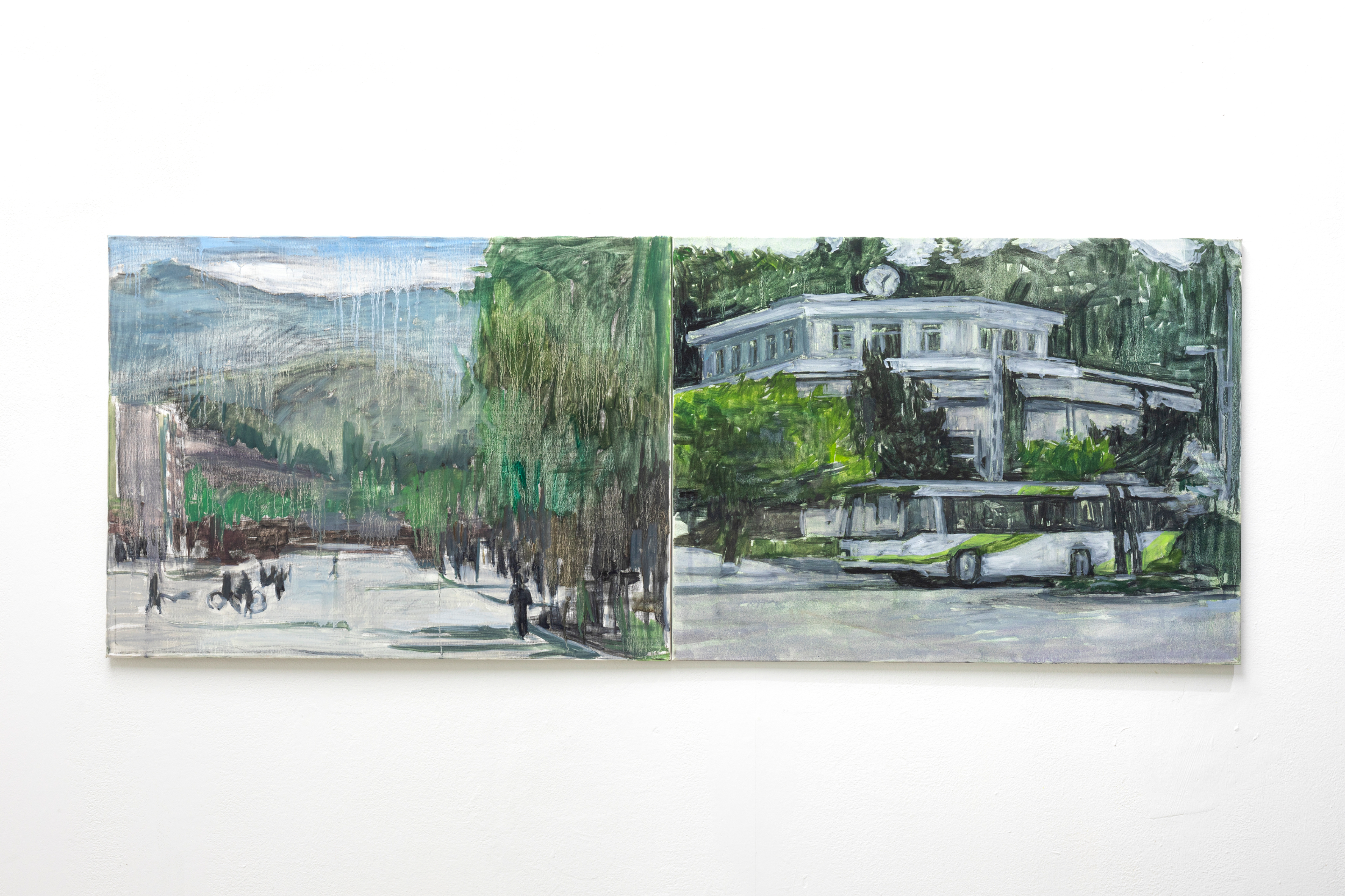
Photography: Tabial
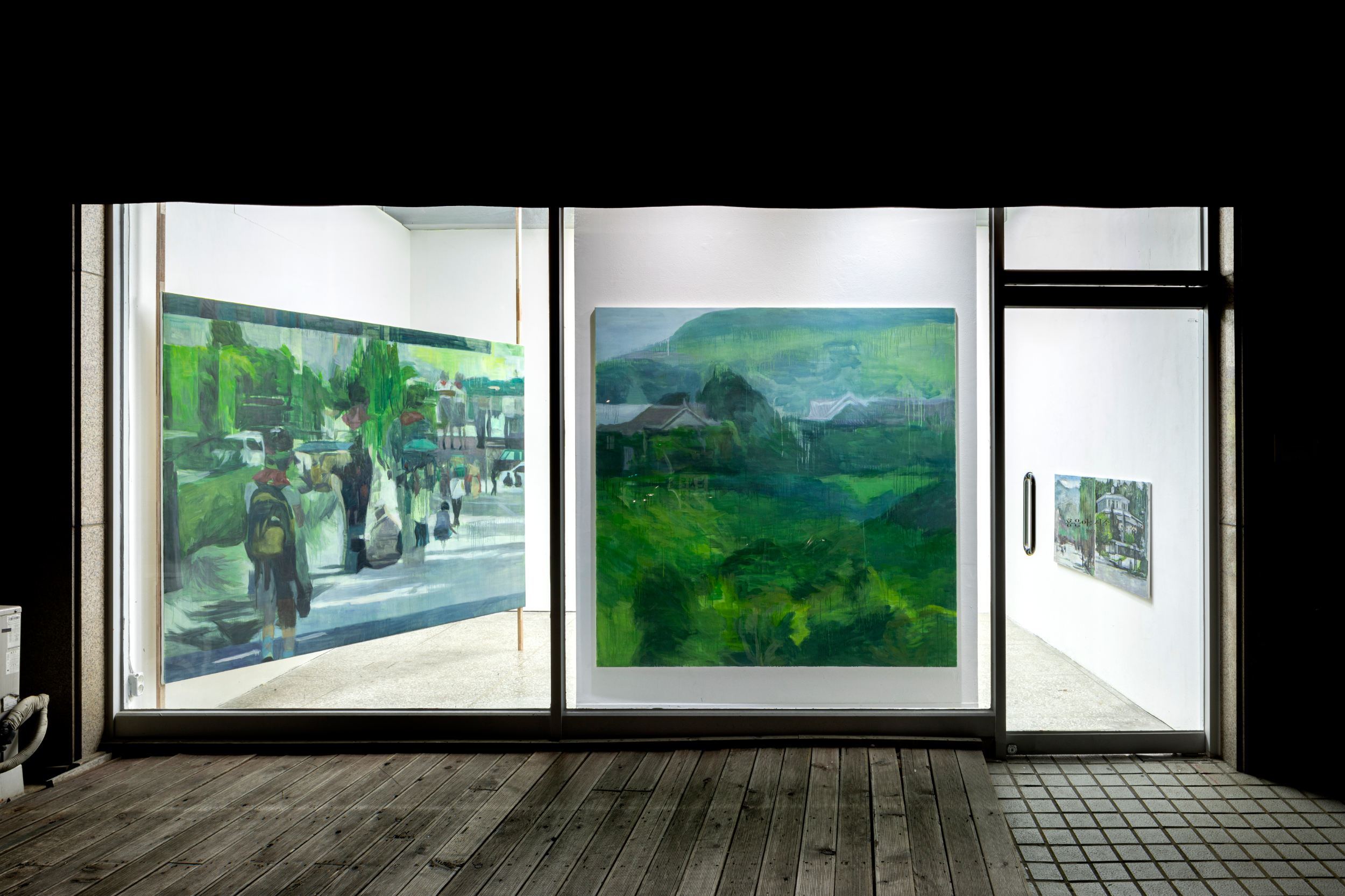
Photography: Tabial
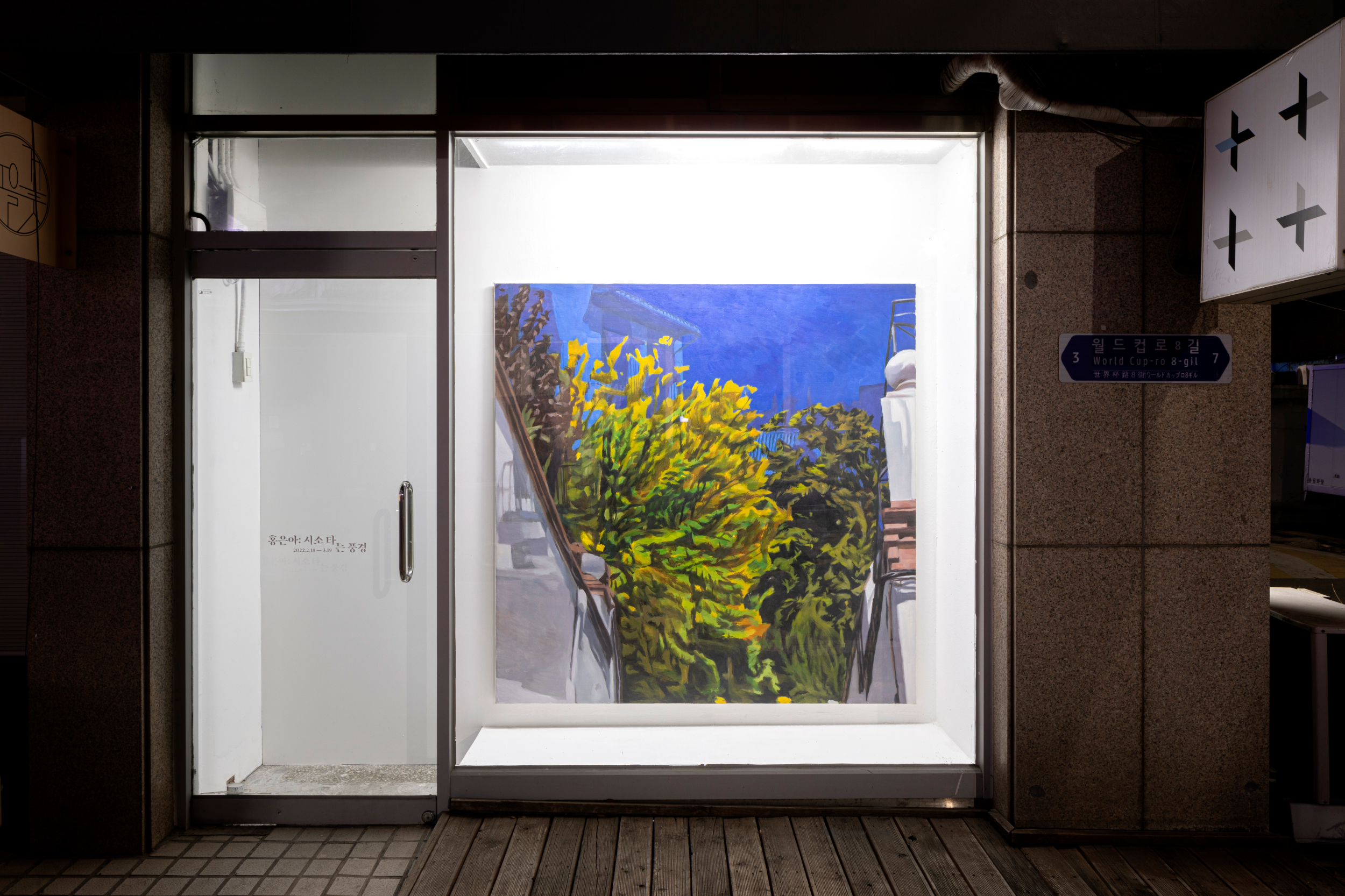
Photography: Tabial
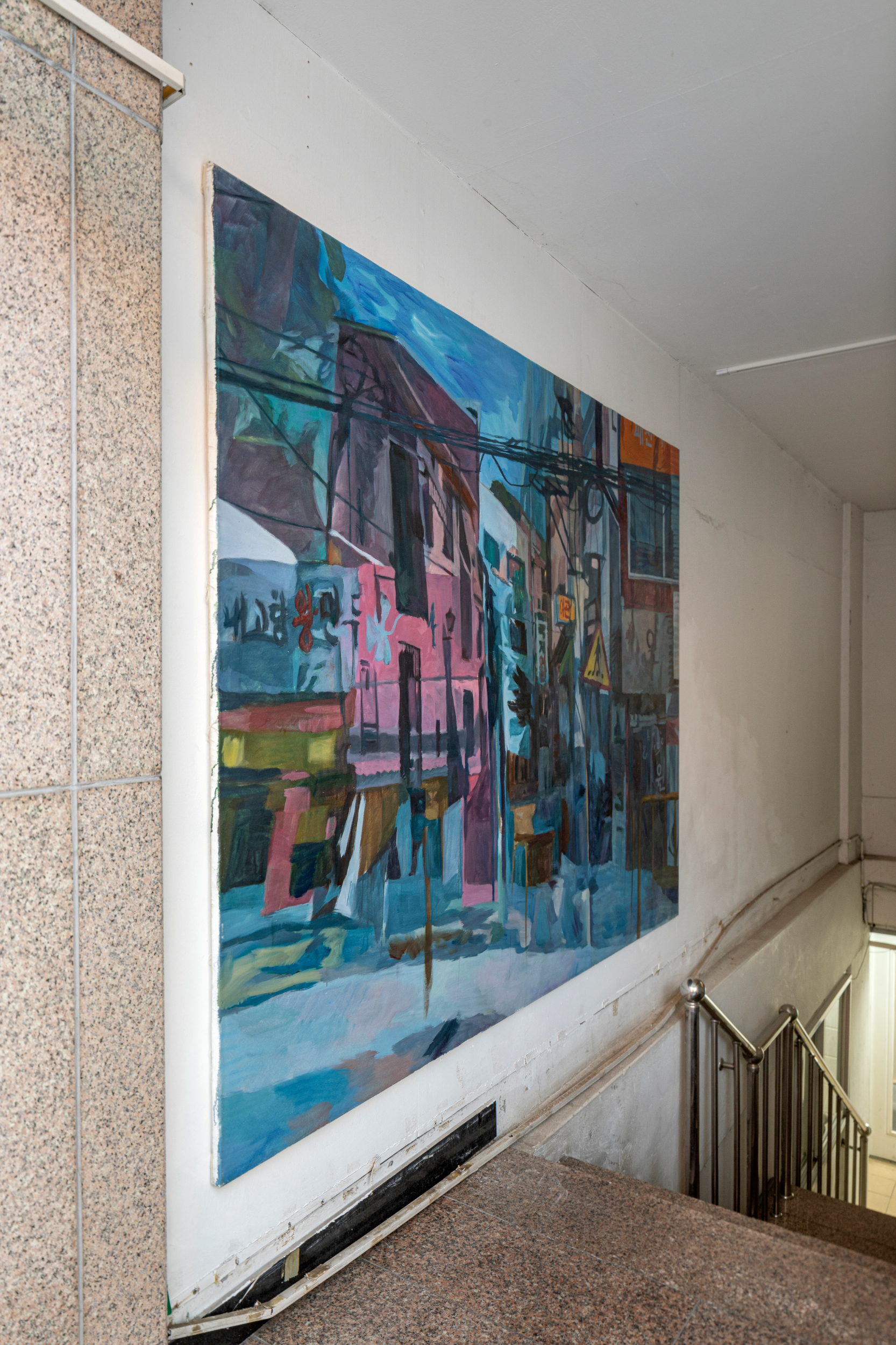
Photography: Tabial
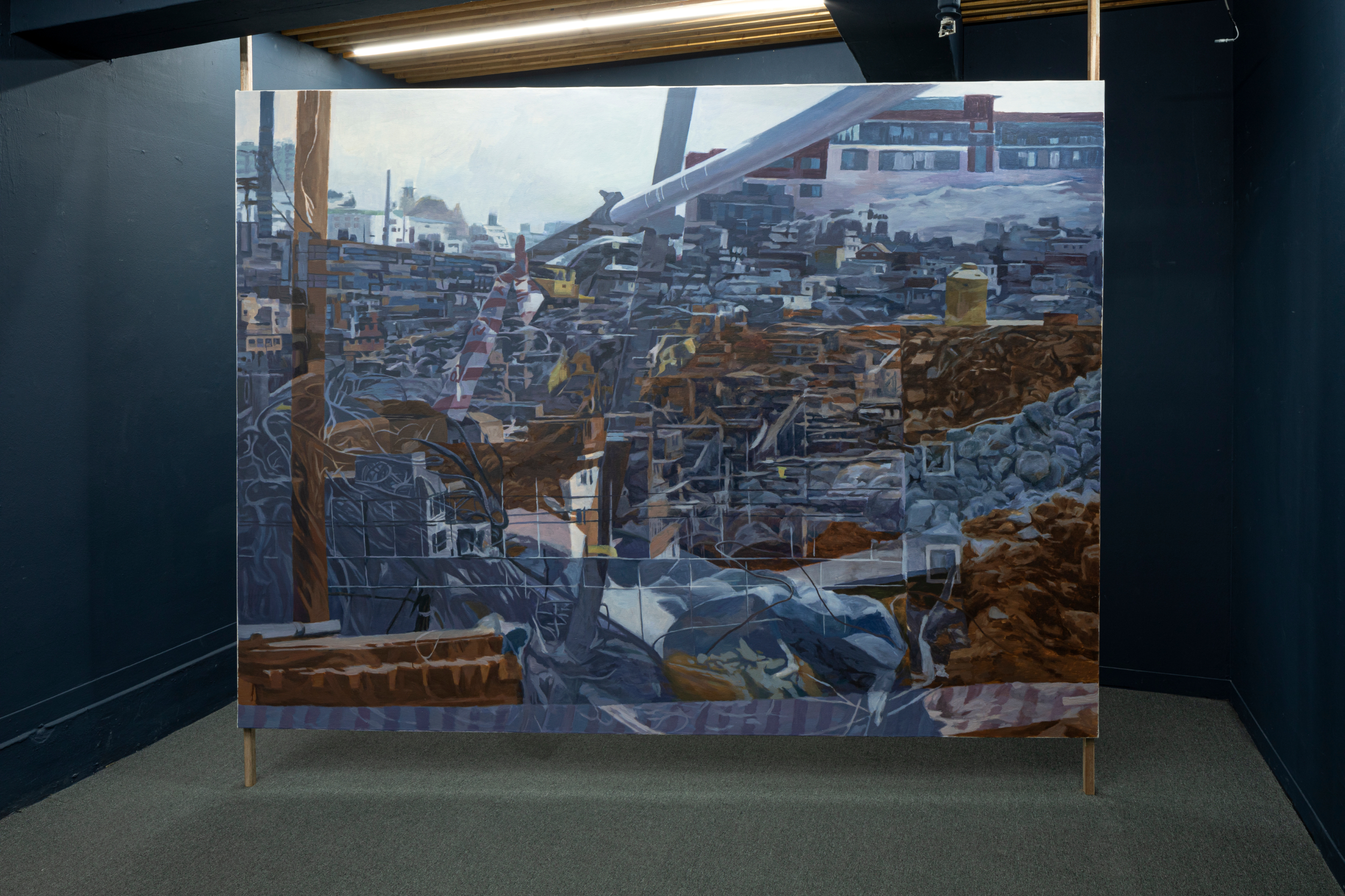
Photography: Tabial
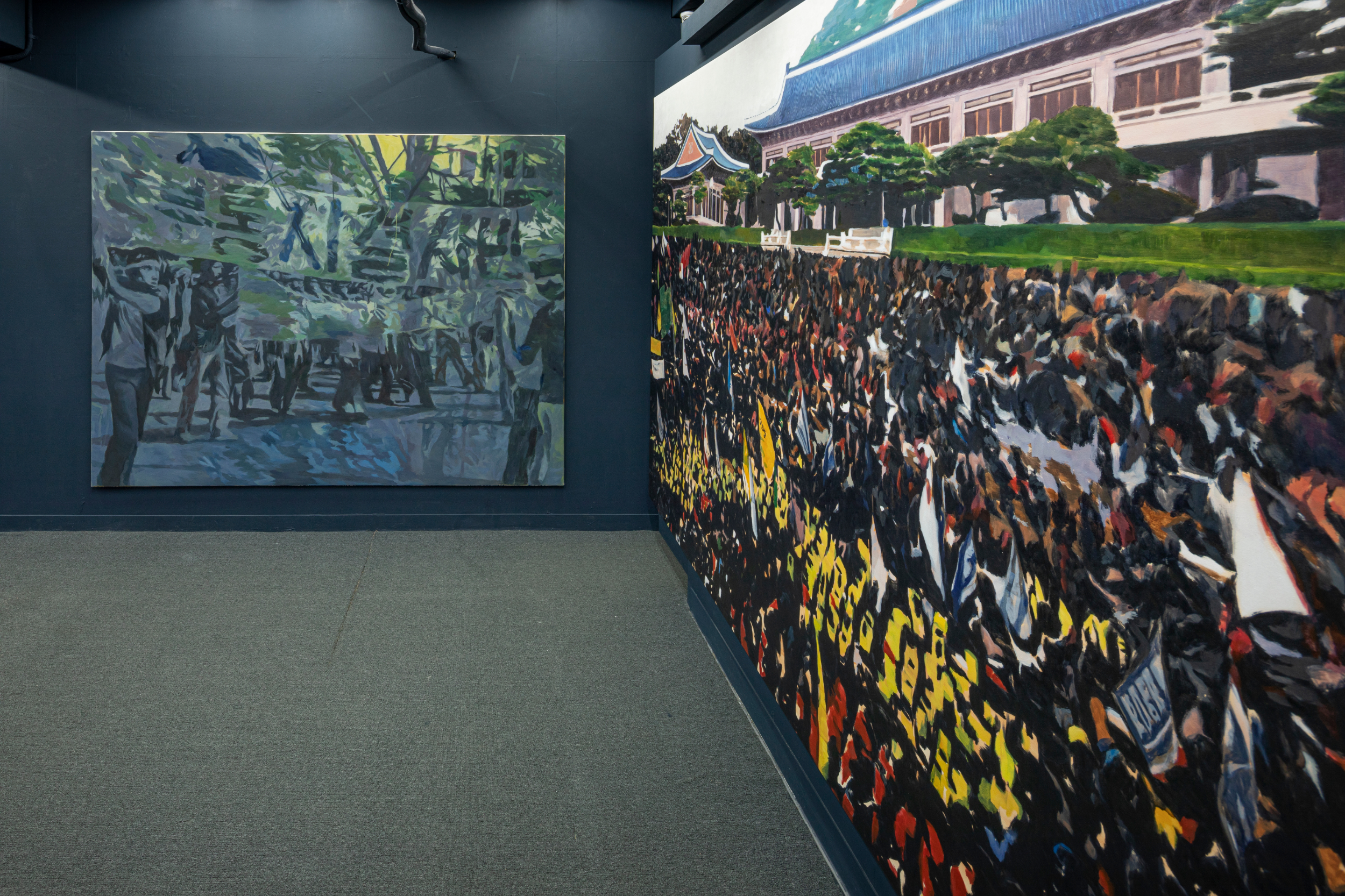
Blue house Oil on canvas, 200x360cm, 2015
Photography: Tabial
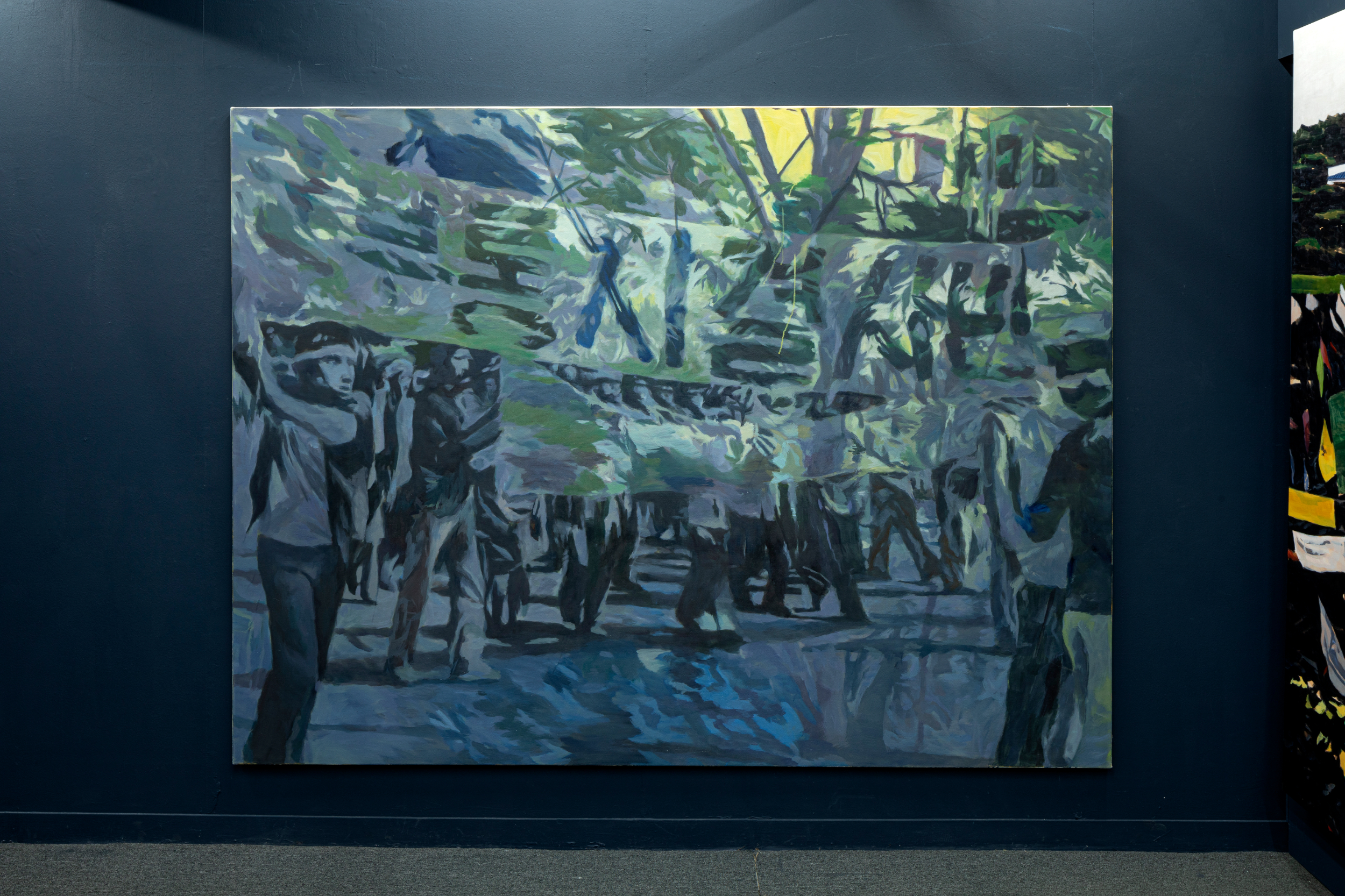
Photography: Tabial
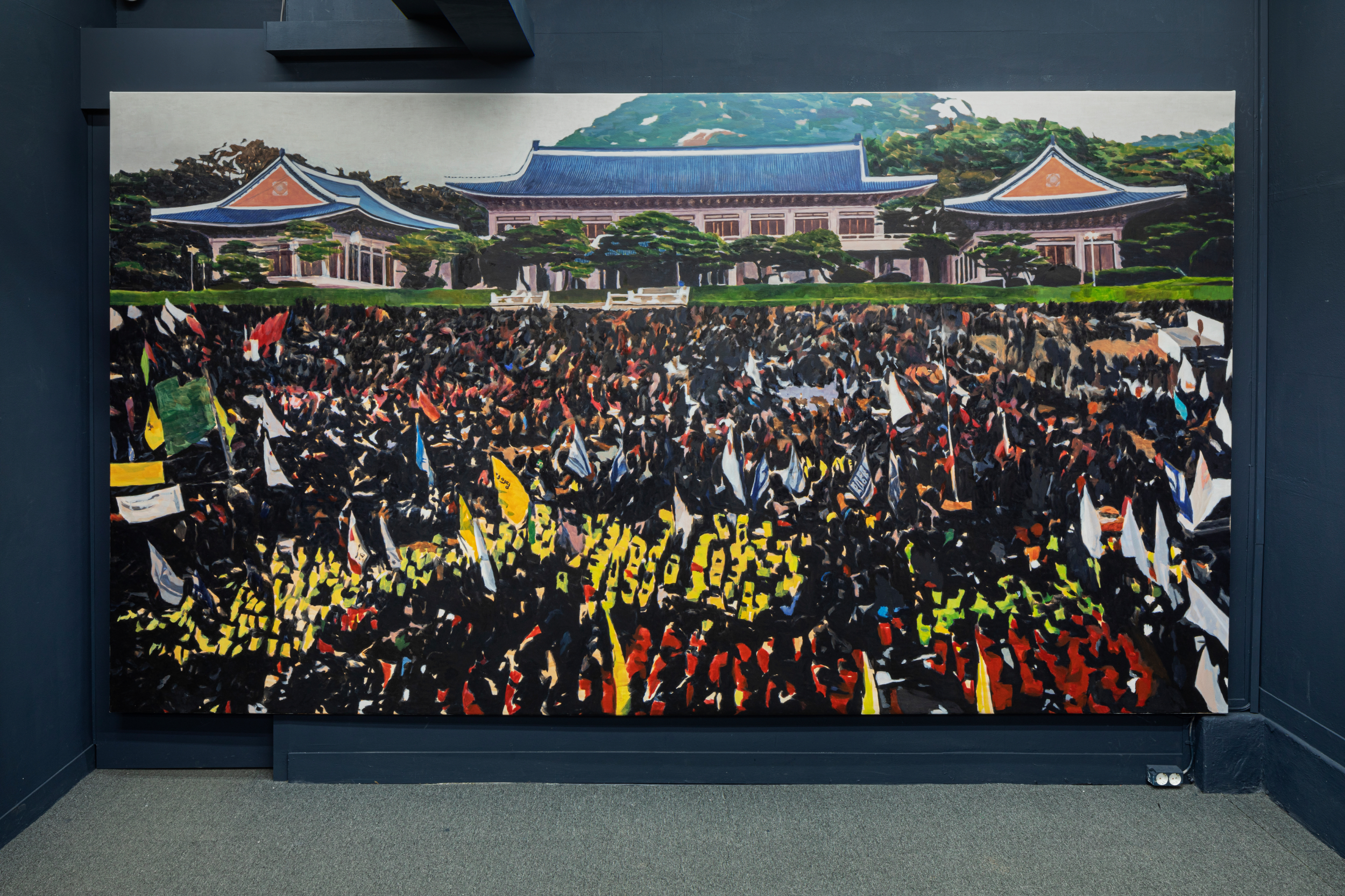
Photography: Tabial
It feels as if the wind is blowing. It is because of the green trees and the clearness surrounding the entire first floor. Everything in <Half Piece of the Landscape 4.> (2021) is transparent, so people, trees, and shadows overlap each other. However, just because it is clear does not mean the wind can blow. The wind needs a way to get in and out. This painting depicts South Koreans climbing a mountain and North Koreans playing volleyball. By overlapping the two landscapes into one, a line interfering with each other’s scenery is created, but the artist does not erase or mash it. Instead, she decided to make it more vivid by contrasting it. From this point on, the landscape begins to fragment and become out of joint. The artist widens this small gap created by the two landscapes and creates a winding path. This transparency completely disappears in <Blue House>(2015). The artist does not allow any blank space in this work, which combines the ‘general strike’ organised by the Korean Confederation of Trade Unions (KCTU) in 2014 and the Blue House. The Blue House occupies the whole space of the painting, and one cannot see a gap between the black crowd. The crowd pressure the Blue House by running precisely towards one point, and the two landscapes completely become a single landscape.
The air in the two paintings is remarkably different. It changes according to the distance between the two landscapes, and this distance is slightly different for each work, making rhythms in the exhibition hall. For example, in <Mountain, Mountain, Blue Mountain> (2018), which depicts mountains in North and South Korea, traces of overlapping landscapes have been erased like in <Blue House>, but a breeze still blows between the landscapes. On the other hand, in <Where Are You Going?> (2012), which mixes the landscapes of Granada, Spain and Seoul, something that looks like shadows flickers on the outside wall of the building and looks dizzy due to the different viewpoints, but the two streets entirely become one landscape. Such diversity of gaps is possible because the artist has a different sense of distance for each painting.
Eunah Hong migrated to Germany and has been living there. She said that she started to see many issues in Korea objectively after she moved to a faraway country. Issues of South and North Korea were one of them. The hatred of some conservatives toward North Korea, viewed from a far distance, was bizarrely extreme. This is why the North Korean landscape she chose is ordinary, and this is why a cool breeze blows between South and North Korea. Even during the 2014 general strike by KCTU, the artist was in Germany. At the time, the government ignored the court’s ruling that “the march could not be stopped” and blocked the demonstration with a bulkhead. The police arrested the organisers and sprayed tear gas on the protesters. Although it was a legitimate demonstration against public sector privatisation and labour oppression, the reaction was violent. In <Blue House>, the distance between the two landscapes completely disappears, and unlike other works, it is produced in a dramatic sense because there is a desire that their message can reach the Blue House.
In other words, to fully convey this sense of distance that the artist feels, it is necessary to find a sense of painting that suits her perception. Eunah Hong repeatedly paints to find a suitable formative language. She experiments with the order of painting, the concentration of paints, and the degree of contrast, and paints unpainted areas or erases already painted areas. As in <Students 1> and <Students 2> hung behind it, she differs the size of the paintings or draws the same landscape numerous times with the pen drawing method as in <Drawing, Blue House>(2015), <Drawing, February 2014, In Front of Seoul City Hall>(2014). Contemplations on paintings, landscapes, and appropriate language that suit each expression lead to <Open Techniques> (2018-2019).
The artist establishes specific rules in this series and draws 22 landscapes following these rules. Sceneries such as accident sites, small-sized demonstrations, traditional games, streets or roads, and homes are all scrambled up, some sceneries are familiar, and others are not. The link between the paintings is indistinct, but the artist decides to be unfriendly, not explaining. (Especially when you think of the banner with red letters hanging in <Half Piece of the Scenery 4.> and the signboard in Korean in <Where Are You Going?>) We do not know where this place is, who these people are and what they are doing, but some of the audience might focus on one spot based on their own experiences. However, the artist even interrupts such appreciation by drawing all the paintings in the same size and hanging them side by side. Accordingly, the situation, ideology, and value contained in the paintings are all appropriated in the same size, volume, and weight.
Here, the drawings that Eunah Hong has drawn for a long time are placed regardless of order. The images she chose change over time, but they are all the same in that they struck the artist. Eunah Hong looks at the struck spot. Taking a closer look, she looks for a suitable place to translate it into a painting fully. So, her paintings show not only her location but also the process of looking around it. She still diligently moves her hands, repeating this process over and over again. Thereby, I hope you can look for a suitable place by moving from painting to painting – like the artist estimated the gap between each landscape, as she examined her place with the sense of her fingertips, as if riding a seesaw.
JEON geuryun (Curator of Hapjungjigu)
Translation: Dahye Yim
전시 서문 <시소 타는 풍경>
마치 바람이라도 부는 것 같다. 1층 전체를 감싸고 있는 초록의 나무와 그 투명함 때문이다. <풍경의 반쪽4.>(2021)에 있는 모든 것은 투명해서 사람, 나무, 그림자는 서로가 서로에게 포개어진다. 하지만 단지 투명하다고 해서 바람이 부는 것은 아니다. 바람이 드나들기 위해서는 길이 필요하다. 이 그림은 등산하는 남한 사람들과 배구하는 북한 사람들을 한 데 그린 것이다. 두 풍경을 하나로 포개면서 서로의 풍경을 방해하는 선이 생기는데, 작가는 이것을 지우거나 뭉개지 않는다. 그 대신 대비를 주어 그것을 더욱 선명하게 만들기로 한다. 이때부터 풍경은 조각나고 어그러지기 시작한다. 작가는 두 풍경이 만들어놓은 이 작은 틈을 벌려 바람길을 튼다. <푸른 기와의 집>(2015)에서는 이 투명함이 완전히 사라진다. 2014년 민주노총이 조직한 ‘총파업’과 청와대를 합쳐 그린 이 작품에 작가는 조금의 여백도 허락하지 않는다. 그림 가득 청와대가 펼쳐져 있고 온통 새카만 군중 사이에는 틈이 보이지 않는다. 이들은 정확히 한 지점을 향해 달려가며 청와대를 압박하고, 두 풍경은 완벽하게 하나가 되어버린다.
두 그림의 공기는 확연히 다르다. 두 풍경 사이의 간격에 따라 변하는 것인데, 이 거리는 작품마다 조금씩 달라 전시장을 리드미컬하게 만든다. 예를 들어 남과 북의 산을 그린 <산아 산아 푸른 산아>(2018)는 <푸른 기와의 집>처럼 풍경이 포개어진 흔적이 지워졌지만, 그 사이에 여전히 미풍이 분다. 스페인 그라나다와 서울의 풍경을 섞은 <어디 가세요?>(2012)는 반대로 건물 외벽으로 그림자 같은 것이 어른거리고 시점이 제각각이어서 온통 어지럽지만 두 거리는 온전히 하나의 풍경이 된다. 이 간극의 차이가 발생하는 이유는 작가가 그림마다 서로 다른 거리감을 가지기 때문이다.
홍은아는 독일로 이주해 생활하고 있는데, 먼 타지에 나가니 한국에서 벌어지는 여러 일이 객관적으로 보이기 시작했다고 말한다. 남과 북의 일도 그중 하나였다. 멀리서 본 북한을 향한 일부 보수주의자들의 혐오는 기이할만큼 지나쳤다. 그가 선택한 북한의 풍경이 평범하고, 남과 북 사이에 선선한 바람이 부는 이유는 여기에 있다. 2014년 총파업 때에도 작가는 독일에 있었다. 당시 정부는 “행진을 막을 수 없다”는 법원의 판결을 무시하고 차단벽으로 집회를 저지했다. 경찰은 주최 측을 구속했고 집회 참여자들에게 최루액을 뿌렸다. 공공부문 민영화와 노동탄압에 대해 반대하는 정당한 집회였음에도 폭력적인 대응이었다. <푸른 기와의 집>에서 두 풍경 간의 거리가 완전히 사라지고 다른 작품과 달리 극적으로 연출된 것은 청와대까지 그 뜻이 가닿기를 바라는 열망이 들어있기 때문이다.
뒤집어 말하면 작가가 느끼는 이 거리감을 온전하게 전하기 위해서는, 그에 맞는 회화의 감각을 찾아야 한다는 뜻이다. 홍은아는 적합한 조형 언어를 찾기 위해서 그림을 반복해서 그린다. 그리는 순서, 물감의 농도, 대비의 정도를 실험해보고 그리지 않은 부분을 더 그려보거나, 그 반대로 지워내기도 한다. <학생들1>과 그 뒤에 걸린 <학생들2>와 같이 그림의 크기를 달리 하거나, <드로잉, 푸른 기와의 집>(2015), <드로잉, 2014년 2월 서울시청 앞>(2014)처럼 펜 드로잉으로 같은 풍경을 여러 차례 그리기도 한다. 그림과 풍경, 그에 맞는 적합한 언어에 대한 고민은 <열린 기법들>(2018-2019)로 이어진다.
이 연작에서 작가는 일정한 규칙을 정하고 그 규칙에 따라 22개의 풍경을 그린다. 여기에는 사고 현장, 소규모 집회, 전통 놀이, 거리나 도로, 집 안과 같은 풍경이 뒤섞여 있는데, 어떤 것은 익숙하고 어떤 것은 아니다. 그림 간의 고리가 희미하지만 작가는 도리어 불친절해지기로 한다. (<풍경의 반쪽 4.>에서 빨간 글씨가 적힌 현수막이 걸려 있던 것, <어디 가세요?>에서 한글로 쓰여진 간판이 있던 것을 떠올리면 더욱 그렇다.) 이곳이 어디인지, 이 사람들은 누구이고 무엇을 하는 중인지 알 수 없는데, 그럼에도 관객 중에는 자신의 경험을 빌어 한 곳에 무게를 더 실을 수도 있겠다. 하지만 작가는 그림을 모두 같은 크기에 그리고 나란히 걸며 그마저도 방해한다. 그에 따라 그림이 담는 상황이나 이념, 가치는 모두 동일한 크기와 부피, 무게로 책정된다.
여기에는 홍은아가 긴 시간동안 그려온 그림이 순서에 상관없이 놓여있다. 그가 선택한 이미지는 시간에 따라 변하지만, 그것이 작가를 쿡 찔렀다는 점에서는 모두 같다. 홍은아는 그 찔려진 곳을 본다. 자세히 보다가, 그것을 그림으로 온전하게 옮겨 내기 위해 적절한 자리를 찾아 나선다. 그래서 그의 그림에는 그의 위치만이 아니라 그것을 둘러보는 과정이 보인다. 그는 지금도 손을 부지런히 움직이며 이 과정을 반복하고 또 반복한다. 그러므로 그림과 그림 사이를 옮겨 다니며 알맞은 자리를 찾아보기를 바란다. 작가가 풍경과 풍경 사이를 가늠했듯, 손 끝의 감각으로 그의 자리를 살피었듯, 시소를 타듯.
전그륜(합정지구 큐레이터)